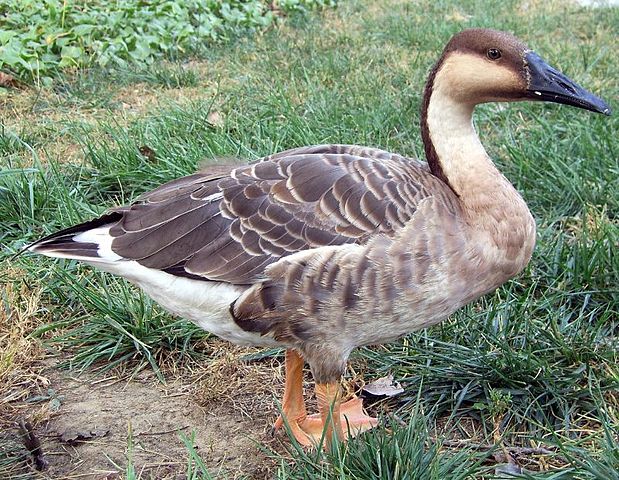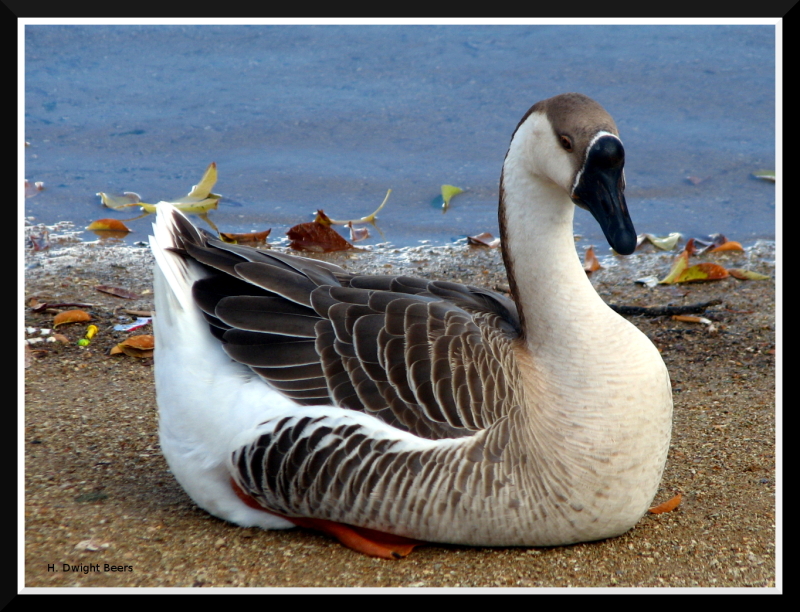Distinguishing features
The upperparts are greyish-brown, with thin light fringes to the larger feathers and a maroon hindneck and cap (reaching just below the eye). The remiges are blackish, as are the entire underwing and the white-tipped rectrices, while the upper- and undertail coverts are white. A thin white stripe surrounds the bill base. Apart from darker streaks on the belly and flanks, the underside is pale buff, being especially light on the lower head and foreneck which are sharply delimited against the maroon. In flight, the wings appear dark, with no conspicuous pattern. Uniquely among its genus, the long, heavy bill is completely black; the legs and feet, on the other hand, are orange as in most of its relatives. The eyes' irides are maroon. Juveniles are duller than adult birds, and lack the white bill base and dark streaks on the underside. (Wikipedia)
Size
- From 81 cm to 94 cm (Length of specimen)
Weight
- From 2.8 kg to 3.5 kg
Wingspan
- From 160 cm to 185 cm - applies to Adults
Synonyms
Comments
Introduced species in Australia
by Geoffrey Shuetrim
Distribution
Distribution and habitat preferences
Its natural breeding range in inland Mongolia, northernmost China, and southeastern Russia. It is migratory and winters mainly in central and eastern China. Vagrant birds are encountered in Japan and Korea (where it used to winter in numbers when it was more common), and more rarely in Kazakhstan, Laos, coastal Siberia, Taiwan, Thailand and Uzbekistan. ��This species has been domesticated. Introduced and feral populations of its domestic breeds occur in many places outside its natural range.
It inhabits steppe to taiga and mountain valleys near freshwater, grazing on plants such as sedges (Cyperaceae), and rarely swimming. It forms small flocks outside the breeding season. In the winter, it grazes on plains and stubble fields, sometimes far from water. (Wikipedia)


